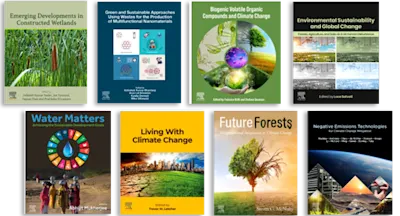
Role of Green Chemistry in Ecosystem Restoration to Achieve Environmental Sustainability
- 1st Edition - December 1, 2023
- Latest edition
- Editors: Arun Lal Srivastav, Ajmer Singh Grewal, Markandeya Tiwari, Tien Duc Pham
- Language: English
Role of Green Chemistry in Ecosystem Restoration to Achieve Environmental Sustainability deals with current challenges of environmental problems along with the approaches of enviro… Read more

- Addresses root causes of prominent environmental problems, including environmental management, water sustainability and agricultural sustainability
- Discusses recent knowledge about the concepts of environmental sustainability
- Highlights various approaches of green chemistry to achieve sustainable development goals
(A) Environmental management
1. Recent advances in sustainability science for environmental conservation
2. Role and application of green chemistry and nanotechnology in environmental sustainability
3. Ecosystem restoration in urban/peri-urban areas through urban sustainability
4. Role of environmental sustainability for climate change adaptations
5. Importance of indigenous knowledge in achieving environmental sustainability
6. Recent environmental management practices adopted in developed countries
7. Role of artificial intelligence to achieve environmental sustainability
(B) Water sustainability
8. Sustainable approaches of heavy metal removal from water
9. Chemistry of water quality parameters for aquatic lives
10. Application of pyrolysis techniques to produce bio-sorbents for water treatment
11. Application of environmental chemistry in the detection of emerging environmental problems and their impacts
12. Socio-economic factors for environmental management in the pharmaceutical industries
13. Emerging organic water pollutants (pesticides, dyes etc) and their remediation strategies
(C) Waste management and environment protection
14. Waste valorisations by environment friendly approaches such as biorefinery
15. Resource recovery from the e-wastes through bioleaching
(D) Agricultural sustainability
16. Role of soil chemistry for agricultural sustainability
17. Role of microbes and plants in soil heath maintenance
18. Green approaches for the development of bio-pesticides and bio-fertilizers
- Edition: 1
- Latest edition
- Published: December 1, 2023
- Language: English
AS
Arun Lal Srivastav
AG
Ajmer Singh Grewal
MT
Markandeya Tiwari
TP